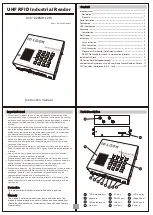
9. Navigation and control system
MiR1000 Shelf Lift User Guide (en) 12/2020 - v.2.1 ©Copyright 2019-2020: Mobile Industrial Robots A/S.
83
9.6 Localization
The goal of the localization process is for the robot to determine where it is currently
located on its map. The robot has three inputs for determining where it is:
•
The initial position of the robot. This is used as a reference point for the methods used to
determine the robot position.
•
The IMU and encoder data. This is used to determine how far and fast the robot has
traveled from the initial position.
•
The laser scanner data. This is used to determine the likely positions of the robot by
comparing the data with nearby walls on the map.
This data is used by a particle filter to determine the most likely position of the robot on the
map.
IMU and motor encoders
Both the data from the IMU (Inertial Measurement Unit) and motor encoders is used to
derive where and how fast the robot has traveled over time from its initial position. The
combination of both sets of data makes the derived position more accurate.
If the drive wheels are worn down significantly—see
—or the robot is running with an incorrect gear ratio, the robot will
miscalculate how far it has traveled based on the encoder data.
Laser scanners and particle filtering
The robot computer compares the input from the laser scanners with the walls on the map
to try and find the best match. This is done using a particle filter algorithm. The robot
computer only compares input from the area where it expects the robot to be based on the
encoder and IMU data. Therefore, it is important that the initial position of the robot is
correct.
















































